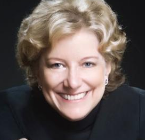Collective wisdom
|
Like this photograph? Join the crowd. It is the top choice of some 3,344 people who answered an open call by the Brooklyn Museum of Art to curate 389 crowd-sourced photographs that best fit the theme, "The Changing Face of Brooklyn." (This photo was shot in 1979 by Marcia Bricker Halperin from a street in Brooklyn, through the front window of the legendary, long-gone Dubrow's Cafeteria.)
Halperin's photograph—the reflection of a Checker cab on Dubrow's window that appears to mingle with the patrons seated inside—joins nine others in the Top 10 "cut of the crowd" that comprise the museum's show, Click! A Crowd-Curated Exhibition. Entirely Web-sourced and Web-curated, the exhibit represents the first use of "crowd-sourcing" by a nonprofit in this way. The museum's goal: to build community, woo potential donors, and raise awareness of its work.
Organizer Shelley Bernstein, BMA's dynamic new manager of information systems, was inspired by the 2004 book, The Wisdom of Crowds. In it, New Yorker columnist James Surowiecki offered the world a simple but profound idea: a large, diverse group of people will make better judgments and smarter decisions than an elite few—no matter how individually brilliant.
Bernstein set out to test that theory in the context of visual art. First, she displayed the images anonymously on the museum's Web site, where anyone interested was invited to log on and rank them, one by one, on a sliding scale from "least effective" to "most effective" in fitting the theme. After a six-week rating period, Bernstein posted the top 20 percent of the images selected—78 photographs in total—on the site and they were pared down further by the crowd. Finally, Bernstein grouped them on the site into various lists, including "Most Discussed" and "Top 10 Compared."
"I wanted to build our community, expand it, and ask it to participate in what we do in some way," she says—critical for engaging new, cause-wired donors and patrons in advocacy today. Bernstein said she was "amazed" that many people who identified themselves as novices selected some of the same photographs as did the experts. (To hear more about what worked and what didn't in Bernstein's experiment, click here for the podcast of a June 28 discussion, which included Surowiecki and fellow crowdsourcing expert Jeff Howe.)
Here's another Top 10 photograph from Click! Called Just Girls, it was shot by photographer Donna Aceto last year at Coney Island:

For more on the wisdom of crowds, click on the video below, in which Howe talks about his new book, Crowdsourcing. It goes on sale next week in bookstores around the country:
Watch this site for more on the lessons of Click! I'll be moderating a September 23 panel on Web 2.0 technology and nonprofits that will include Bernstein and a discussion of her experiment at the Harvard Business School Club of New York's Social Enterprise Summit.
In the four years since Surowiecki's book, the phrases, "the hive mind" and "crowd-sourcing" have entered the lexicon: those inventing the next, "2.0" version of the Web are testing ways that companies, educators, and social change advocates can tap into their thousands of new and expanding social networks—on demand—for better ideas, more money, and greater influence.
Labels: Brooklyn Museum of Art, community, crowd-sourcing, fundraising, global philanthropy, photography, social media, visual art, Web 2.0, wisdom of crowds





